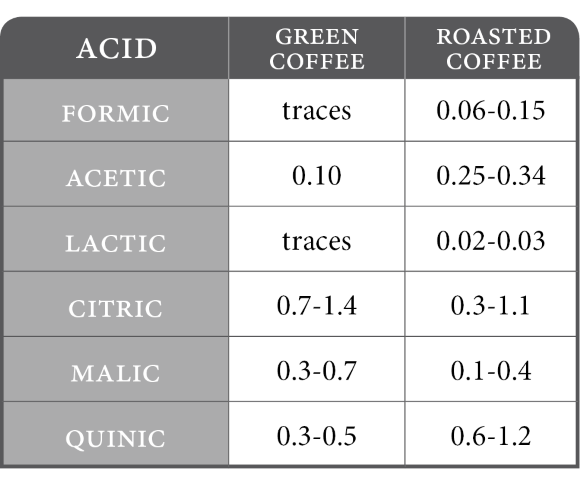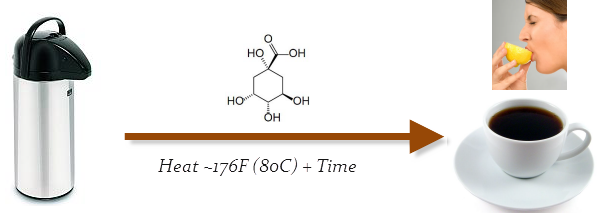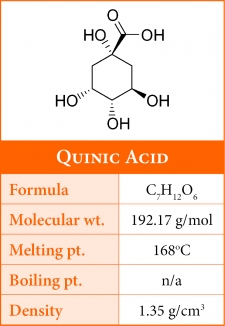Quinic acid concentrations reach a maximum at French roasts then progressively decrease as roasting progresses. Actual temperature figures of when this occurs have yet to be published and vary depending on environmental conditions within the roaster.
Organic Acid Content in Green vs Roasted Coffee
As seen from Table below, quinic acid is at the lower end in concentration when compared to the other acids found in coffee. Upon roasting quinic acid approximately doubles in concentration due to the breakdown of chlorogenic acid (CQA) already present in the green bean. Since the CQA concentration can vary between species and maturation level, its important to take this into account when making comparisons.
Organic Acid content in green and roasted coffee:
Progressive roasting decomposes CQA and Quinic Acid to form a number of secondary compounds including phenol, catechol, hydroquinone, pyrogallol and several diphenols which are believed to be important coffee aroma precursors.
Coffee Sourness During Cooling
Quinic acid has also been associated with an increase in perceived acidity as coffee infusions are left standing at elevated temperatures. This effect is best illustrated when coffee is left in carafes on heating plates (or airpots) where temperatures can exceed 80°C. The effect is also commonly seen during cupping when coffees cool in temperature and there is a gradual rise in levels of perceived acidity.

For those wishing to gain a better understanding of how acids work in coffee - we suggest you enroll in our Coffee Science Certificate (CSC) seminar.

